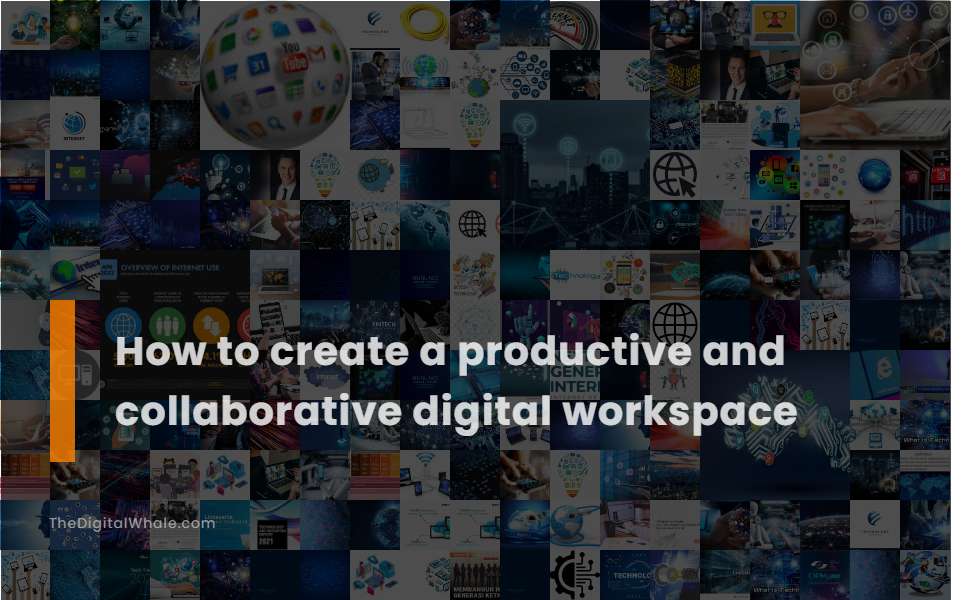How To Create A Productive and Collaborative Digital Workspace
How can a digital workplace help teams be more productive? What are some tips for creating a productive workspace? Let's find out more about How To Create A Productive and Collaborative Digital Workspace.

Strategy and Roadmap: Develop a centralized strategy with decentralized applications and systems.
To create a productive and collaborative digital workspace, develop a clear strategy that defines achievable organizational goals and timelines, while incorporating decentralized applications to enhance security, transparency, and user autonomy. It is essential to ensure governance and change management are well-integrated into the roadmap. For more insights on how to optimize your digital environment, visit the Digital Workplace guide for comprehensive strategies and solutions.
Seamless Communication: Implement real-time communication tools such as video conferencing, messaging software, and team chat.
To create a productive and collaborative digital workspace, implement real-time communication tools like Slack for organized team messaging and channels, Loom for asynchronous video updates, and platforms like Microsoft Teams for video conferencing and integrated collaboration. These tools enable seamless communication, whether through instant messaging, video calls, or recorded updates, helping to keep teams connected and engaged.
Collaboration Tools: Use project management, document sharing, and virtual meeting spaces to facilitate teamwork.
To create a productive and collaborative digital workspace, utilize tools like Google Workspace for real-time document collaboration, Slack or Microsoft Teams for communication, and platforms like Kumospace or SpatialChat for virtual meeting spaces, ensuring seamless teamwork and efficient project management.
Governance and Access Control: Determine who has access to and control over different aspects of the digital workspace.
To create a productive and collaborative digital workspace, it is essential to implement a governance framework that includes rules, systems, and processes for security, communication, technology, and compliance. This ensures clear data ownership, automated policy enforcement, and regular recertification of assets to maintain compliance and security. Furthermore, effective access control plays a crucial role by defining roles, assigning necessary permissions, and using tools like Role-Based Access Control (RBAC) and Attribute-Based Access Control (ABAC). These controls grant access based on job functions and attributes, while regular audits and updates of access levels are conducted to ensure ongoing security and compliance.
Cloud Applications: Utilize cloud technology for improved speed, accessibility, and business continuity.
To create a productive and collaborative digital workspace, utilize cloud applications to improve speed, accessibility, and business continuity. This involves integrating tools like cloud applications, secured communications, and multi-layered security frameworks to enhance real-time communication, collaboration, and data security.
Related:
How technology affects work-life balance? What are the long-term effects of digital technology on work? Let's find out more about The Impact of Digital Technology On Work-Life Balance.
Multi-Layered Security Framework: Ensure data and information security through robust security measures.
To create a productive and collaborative digital workspace with a multi-layered security framework, it is essential to implement principles such as Zero-Trust, Identity and Access Management (IAM) with multifactor authentication, and Managed Device Compliance. This ensures robust security measures to protect data and information. A multi-layered security approach involves deploying multiple layers of defense, including endpoint security, firewalls, network segmentation, encryption, and Security Awareness Training, to detect, block, and respond to cyber threats. This comprehensive method enhances threat detection and significantly reduces the risk of data breaches, thereby safeguarding your digital environment effectively.
Employee Training and Support: Provide training and support to help employees adapt to the new digital environment.
To create a productive and collaborative digital workspace, implement comprehensive training programs like Mastering the Digital Workplace, which equips employees with essential digital skills, including the use of productivity tools, communication platforms, data analysis, AI integration, and cybersecurity, ensuring they can effectively adapt to the new digital environment. Adapt employee learning programs to virtual environments by emphasizing personalized learning paths, interactive content, microlearning strategies, and blended approaches. This includes using tools like learning management systems and collaboration platforms to provide practical assessments, case studies, and simulation-based learning to help employees apply their skills effectively in remote and hybrid work settings.
Customization and Personalization: Offer options for customizing the workspace layout, design, and features to enhance user engagement.
To create a productive and collaborative digital workspace, it is essential to focus on customization and personalization. This can be achieved by allowing users to add, resize, and rearrange widgets, fine-tune widget settings, and create additional boards tailored to their individual needs and workflows. By exploring the importance of such customization, you can learn more about creating effective virtual environments through resources like the Kumospace Blog. Customizing a virtual workspace by choosing preferred layouts, color schemes, and adding personal elements like photos or backgrounds allows individuals to organize tools and features according to their preferences, ultimately enhancing user engagement and productivity.
Knowledge Management and Information Sharing: Implement platforms for efficient information sharing and knowledge management.
To create a productive and collaborative digital workspace focused on knowledge management and information sharing, implement platforms like Document360, Nuclino, or Confluence, which offer advanced search capabilities, real-time collaboration, and integrated tools for centralized knowledge bases and efficient content creation.
Scalability and Compatibility: Choose technologies that are scalable and compatible with various devices and internet connections.
To create a productive and collaborative Digital Workspace, focus on scalability and compatibility by integrating technologies that can add or remove apps as needed without disrupting workflows. Ensuring compatibility with a variety of applications and devices is crucial to access the entire suite of tools from any internet-connected device. For more insights into the digital workspace, explore the Evolution of Digital Workplace Platform.
Related:
How can wearables help organisations better track employees' work performance? What is the Potentially Super Creepy Future of Wearable Tech in the Workplace? Let's find out more about The Future of Wearable Technology In the Workplace.
